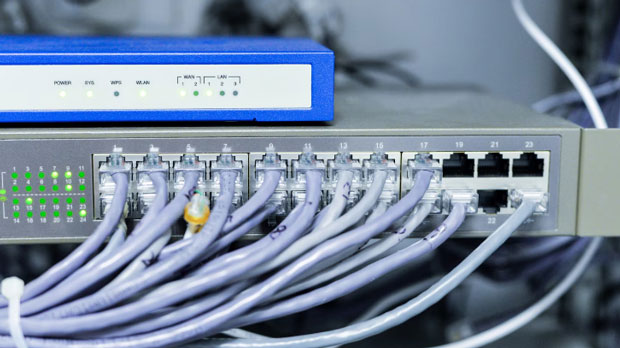The internet is an essential tool for both personal and professional use. As users increasingly look for ways to secure their data, bypass geographic restrictions, or enhance their online experience, tools like proxies and VPNs have become crucial. While both serve to mask your IP address and offer certain levels of privacy, their speed can differ significantly. In this article, we will compare the speeds of Proxy for Web and VPN services, examining their efficiency, advantages, and limitations. This analysis will provide insights to help you make an informed decision based on your needs, whether for browsing, streaming, or online gaming. Understanding Proxy for Web and VPNBefore diving into a speed comparison, it’s important to understand what proxies and VPNs are and how they work.Proxy for Web:A proxy server is an intermediary between your device and the internet. When you use a proxy, your internet traffic is routed through the proxy server, which assigns you a different IP address. This makes it look like your internet requests are coming from the proxy server rather than your device.VPN (Virtual Private Network):A VPN works similarly but with a higher level of security. It creates an encrypted tunnel between your device and the VPN server. All your internet traffic passes through this tunnel, ensuring privacy and security. The VPN server then assigns you an IP address and routes your traffic to its destination.The key difference lies in the encryption: while proxies offer little to no encryption, VPNs ensure that your connection is encrypted and protected from prying eyes.Factors Affecting SpeedWhen comparing the speeds of Proxy for Web and VPN, several factors come into play. Understanding these factors will help explain why there are speed variations between the two:1. Encryption and Overhead:The primary reason VPNs often have slower speeds compared to proxies is the encryption process. VPNs encrypt all traffic passing through them, which adds overhead and requires more resources. While this extra layer of security is crucial for privacy, it can impact speed. Proxies, on the other hand, do not encrypt traffic and thus experience fewer delays.2. Server Load and Distance:Both proxies and VPNs rely on servers to route your traffic. If the server is overloaded or located far from your physical location, speed can be significantly reduced. VPN providers generally have fewer servers than proxy services, meaning users may face congestion on specific VPN servers. The closer the server, the better the speed, but this is true for both services.3. Bandwidth Limitation:Bandwidth is the amount of data that can be transmitted over a network in a given period. VPNs can sometimes be slower if they offer limited bandwidth, especially if the VPN service is shared among many users. Proxies may offer higher bandwidth, but this also depends on the quality of the service provider.4. Protocols Used:Both VPN and proxy services use different protocols to route traffic. The protocols used by VPNs, like OpenVPN or IKEv2, are more secure but may cause a slight reduction in speed. Proxies, especially HTTP or SOCKS proxies, typically use simpler protocols that don’t require as much processing power, leading to faster speeds.Speed of Proxy for Web vs. VPNNow that we understand the factors influencing speed, let’s take a look at the general performance comparison between Proxy for Web and VPN.Proxy for Web Speed:Proxies tend to offer faster speeds than VPNs due to the lack of encryption. They are ideal for users who are primarily interested in bypassing geo-restrictions or accessing content anonymously without the need for heavy security. However, this comes with trade-offs in terms of privacy and security.For tasks such as web browsing or accessing region-locked content, a proxy can provide a fast and reliable connection. However, if sensitive data is involved or if you need to secure your online activity, the lack of encryption in proxies becomes a limitation.VPN Speed:VPNs, while generally slower than proxies, offer a higher level of privacy and security. The encryption process inherently causes some degree of latency, but for users who prioritize privacy or need to ensure secure data transmission (such as for banking, confidential communications, or work-related tasks), the trade-off in speed is usually acceptable.The speed of a VPN also depends on the server location and load. Some premium VPN services optimize their servers to minimize speed loss, but users can still expect some degree of slow-down due to encryption. For tasks like online streaming, gaming, or data transfer, VPNs may introduce noticeable lag, but they provide the added benefit of enhanced privacy.Use Cases for Proxy and VPNDepending on your specific needs, you may choose either a proxy or a VPN based on speed and functionality.When to Use a Proxy for Web:- Bypassing Geo-blocked Content: Proxies are great for users who simply want to access websites or content restricted by region. The speed of proxies makes them ideal for this task.- Basic Anonymity: If you want to hide your IP address for basic anonymity without requiring strong security, proxies work well.- Streaming Services: Proxies are commonly used for streaming purposes as they can easily bypass content restrictions. The speed makes watching videos or accessing services faster than a VPN.When to Use a VPN:- Online Privacy and Security: If your main concern is privacy, such as preventing surveillance or protecting your personal information, a VPN is the right choice. The trade-off in speed is usually worth the enhanced security.- Work and Confidential Data: For tasks involving sensitive information, a VPN ensures that your data is encrypted and secure, which is critical for work-related activities or handling confidential documents.- Bypassing Restrictions with Higher Security: In cases where both security and bypassing regional restrictions are needed, a VPN is the optimal solution.Conclusion: Proxy for Web vs. VPN – Which One to Choose?When it comes to speed, proxies generally offer a faster experience due to the lack of encryption, making them suitable for basic browsing, streaming, and bypassing geo-restrictions. However, for users who prioritize security and privacy, a VPN, despite being slower, offers a better solution with its encrypted tunnel.Ultimately, the decision between a proxy and a VPN comes down to your needs. If you require high-speed access with minimal privacy concerns, a proxy might be sufficient. On the other hand, if privacy, security, and encryption are your top priorities, a VPN is the superior option, despite its potential impact on speed. Consider your specific requirements, and choose the tool that best fits your online activities.
Jul 04, 2025



































































